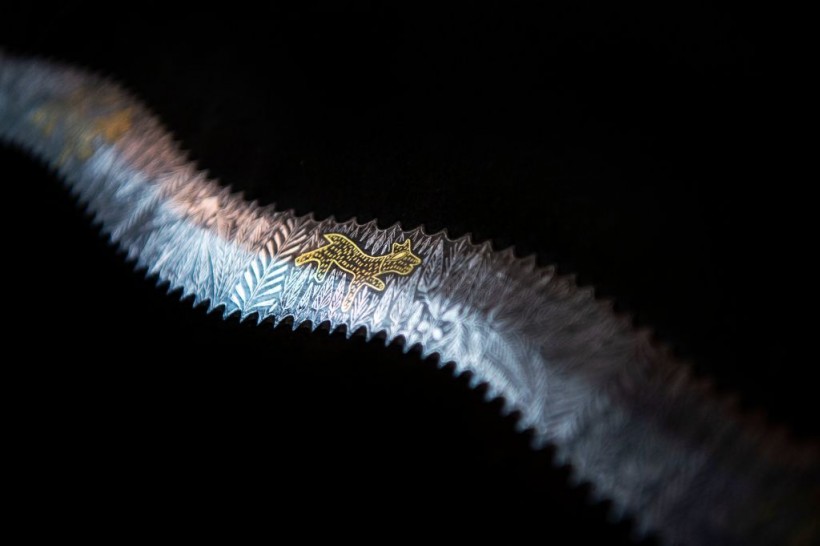Archaeologists in Germany have made a remarkable discovery as they unearthed a shining Bronze Age sword believed to be over 3,000 years old.
The sword, found during recent excavations in Noerdlingen, Bavaria, is exceptionally well-preserved, with officials stating that it "almost still shines," according to a report by AFP.

A ceremonial Indo-Persian sword is displayed during a transfer of ownership ceremony at Kelvingrove Art Gallery and Museum in Glasgow on August 19, 2022 as Scotland prepares to repatriate Indian artefacts.
Rare Bronze Age Find
Dating back to the end of the 14th century BC, the sword features a bronze octagonal hilt in the middle of the Bronze Age. It was discovered in a grave alongside the remains of three individuals-a man, a woman, and a boy-who were buried in quick succession along with other bronze objects.
The Bavarian office responsible for preserving historical monuments reported this significant finding.
The relationship between the three individuals remains unclear, and further examination of the sword and the burial site is necessary for archaeologists to gain a more precise understanding of the discovery.
Nonetheless, Mathias Pfeil, the head of the preservation office, expressed the rarity and remarkable preservation of the sword, stating, "A find like this is very rare."
During the Bronze Age, swords from this period are not commonly found intact, making this discovery all the more extraordinary. Typically, swords from this era have been uncovered from burial mounds excavated in the 19th century or as isolated finds.
The emergence of a well-preserved sword is a testament to the significance and rarity of this archaeological find.
Read Also: Ancient Engravings in Jordan, Saudi Arabia May Point to Oldest Construction Plans Ever Discovered
3,000-year-old Mummy
In a related discovery, archaeologists near Lima, the capital of Peru, unearthed an estimated 3,000-year-old mummy believed to belong to the Manchay civilization. Students from San Marcos University stumbled upon the mummy while excavating a trash dump site.
Their careful exploration yielded a skull, and pieces of hair, eventually leading them to the mummy itself. Under the guidance of archaeologist Miguel Aguilar, the group sifted through eight tons of garbage before embarking on their arduous search for ancient relics.
The Manchay civilization thrived in Lima between 1500BC and 1000BC, was known for its architectural alignment, particularly in temples that faced the rising sun.
The mummy was discovered meticulously positioned in a tomb near the center of a U-shaped structure-a characteristic architectural feature of the Manchay people. Covered in material made of cotton and plant fibers, the mummy provides a fascinating insight into the funeral practices of this ancient society.
Aguilar suggests that the individual was either abandoned or sacrificed during the final phase of the temple's use. This discovery sheds light on the customs and rituals of the Manchay civilization during their "formative era" three millennia ago.
Both the unearthing of the shining Bronze Age sword in Germany and the discovery of the ancient mummy in Peru offer valuable glimpses into the past, unraveling the mysteries and customs of bygone civilizations.
These archaeological finds contribute to our understanding of human history and the diverse cultures that once thrived on our planet.
Related Article: Oxford Archaeologists Use Google Earth to Locate Roman Military Camps in Arabian Desert









